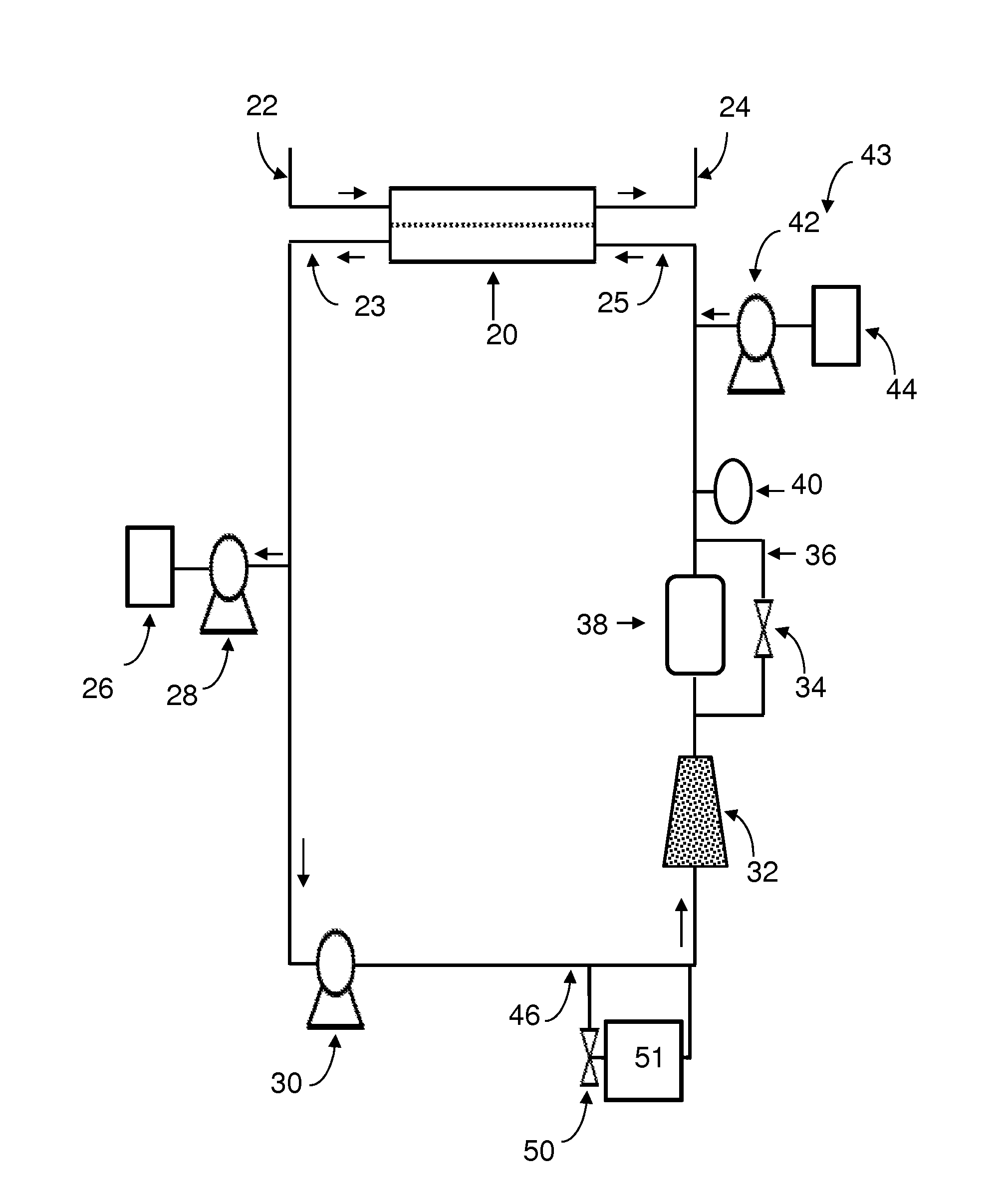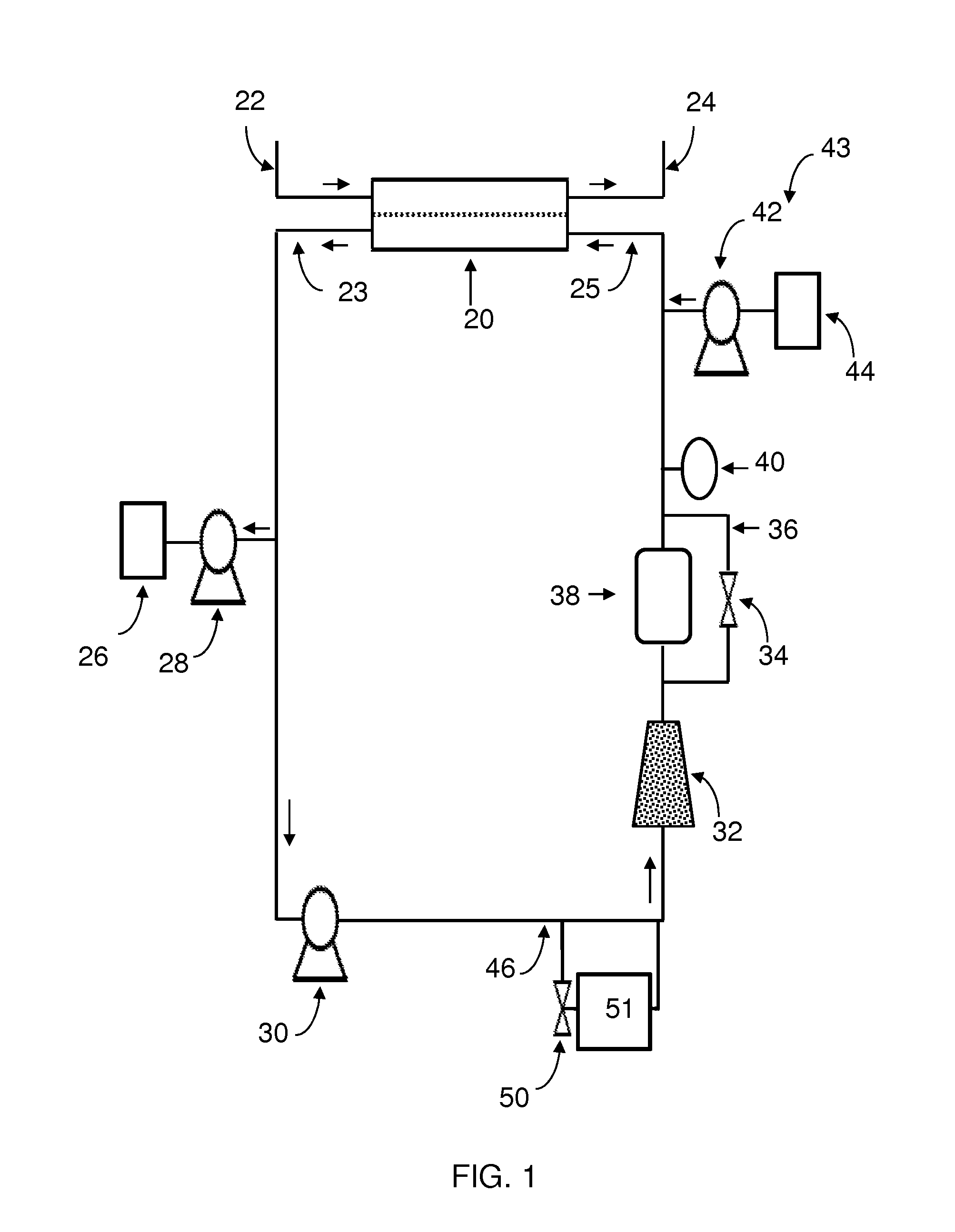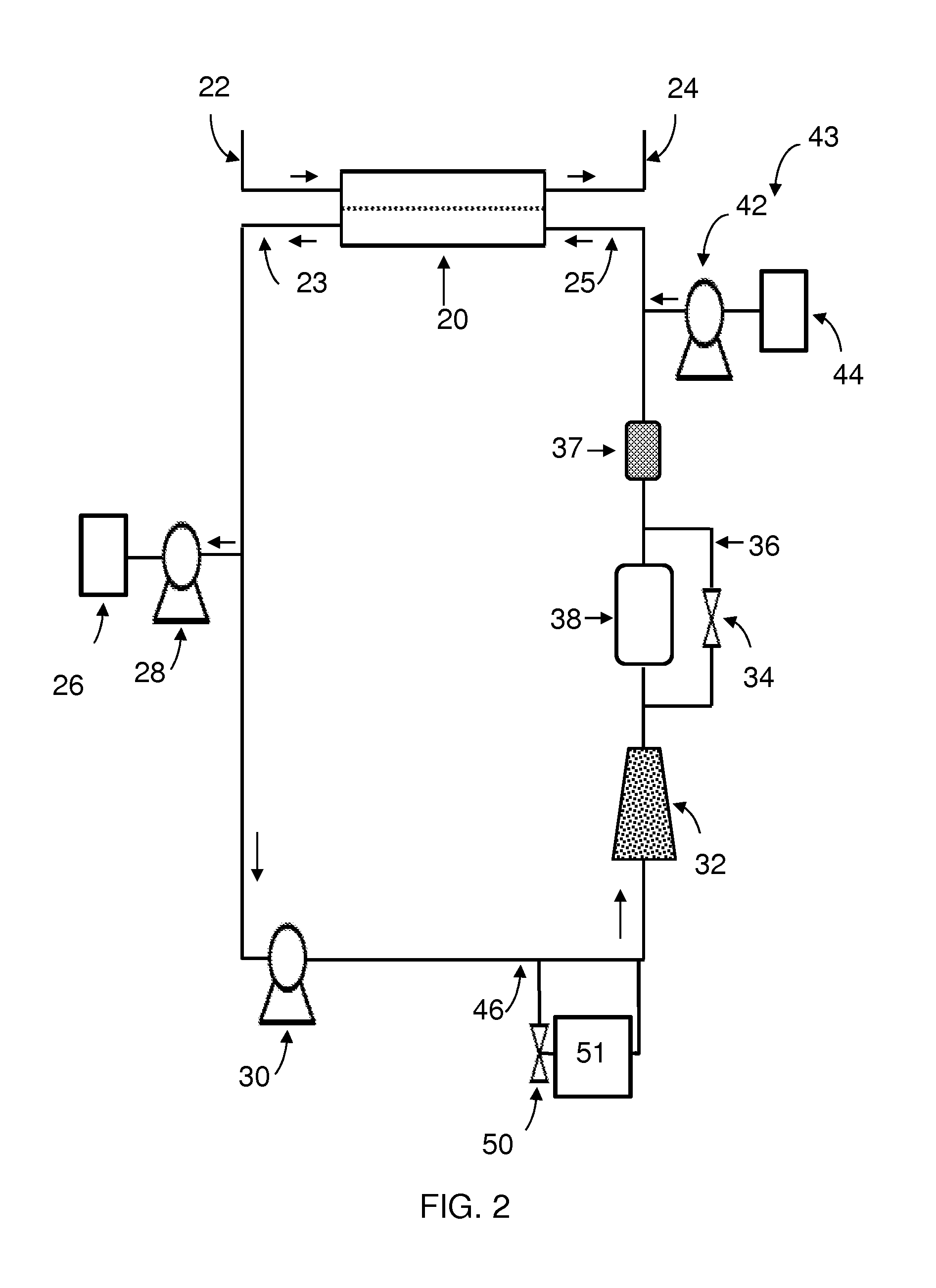Potassium loaded ion-exchange material for use in a dialysate regeneration system
a dialysate and ion exchange technology, applied in the direction of fluid pressure measurement, liquid/fluent solid measurement, peptide, etc., can solve the problems of difficult to predict the changes in dialysate sodium concentration that will occur, the increase in the sodium ion concentration of a working dialysate becomes difficult to predict, and the cost of sorbent materials can be depleted
- Summary
- Abstract
- Description
- Claims
- Application Information
AI Technical Summary
Benefits of technology
Problems solved by technology
Method used
Image
Examples
example
Electrodialysis for Potassium Management
[0315]Potassium generated from an ion-exchange based dialysate regeneration system can be removed or adjusted using electrodialysis. Assuming a 5 day / week hemodialysis schedule with a 70-kg patient generating BUN at a rate of 63 grams / week. The amount of urea to be removed from the dialysate per session will be 470 millimoles. Normal blood serum potassium ion concentration is from 3.5 to 5.0 mmol / L. As such, this concentration of potassium ion may be left in the dialysate for use in the dialyzer upon regeneration of the dialysate. Also, assuming a sorbent system similar to the REDY is utilized for dialysate regeneration having potassiumsaturated cation exchange material, the 470 millimoles of urea will displace up to 940 millimoles of potassium ion during the ion-exchange reaction in the zirconium phosphate layer. Also, assuming a session time of 3 hours, the average rate of potassium generation will be 5 millimoles per minute. Therefore, it i...
PUM
| Property | Measurement | Unit |
|---|---|---|
| diameter | aaaaa | aaaaa |
| molecular weight | aaaaa | aaaaa |
| void volume | aaaaa | aaaaa |
Abstract
Description
Claims
Application Information
 Login to View More
Login to View More - R&D
- Intellectual Property
- Life Sciences
- Materials
- Tech Scout
- Unparalleled Data Quality
- Higher Quality Content
- 60% Fewer Hallucinations
Browse by: Latest US Patents, China's latest patents, Technical Efficacy Thesaurus, Application Domain, Technology Topic, Popular Technical Reports.
© 2025 PatSnap. All rights reserved.Legal|Privacy policy|Modern Slavery Act Transparency Statement|Sitemap|About US| Contact US: help@patsnap.com



